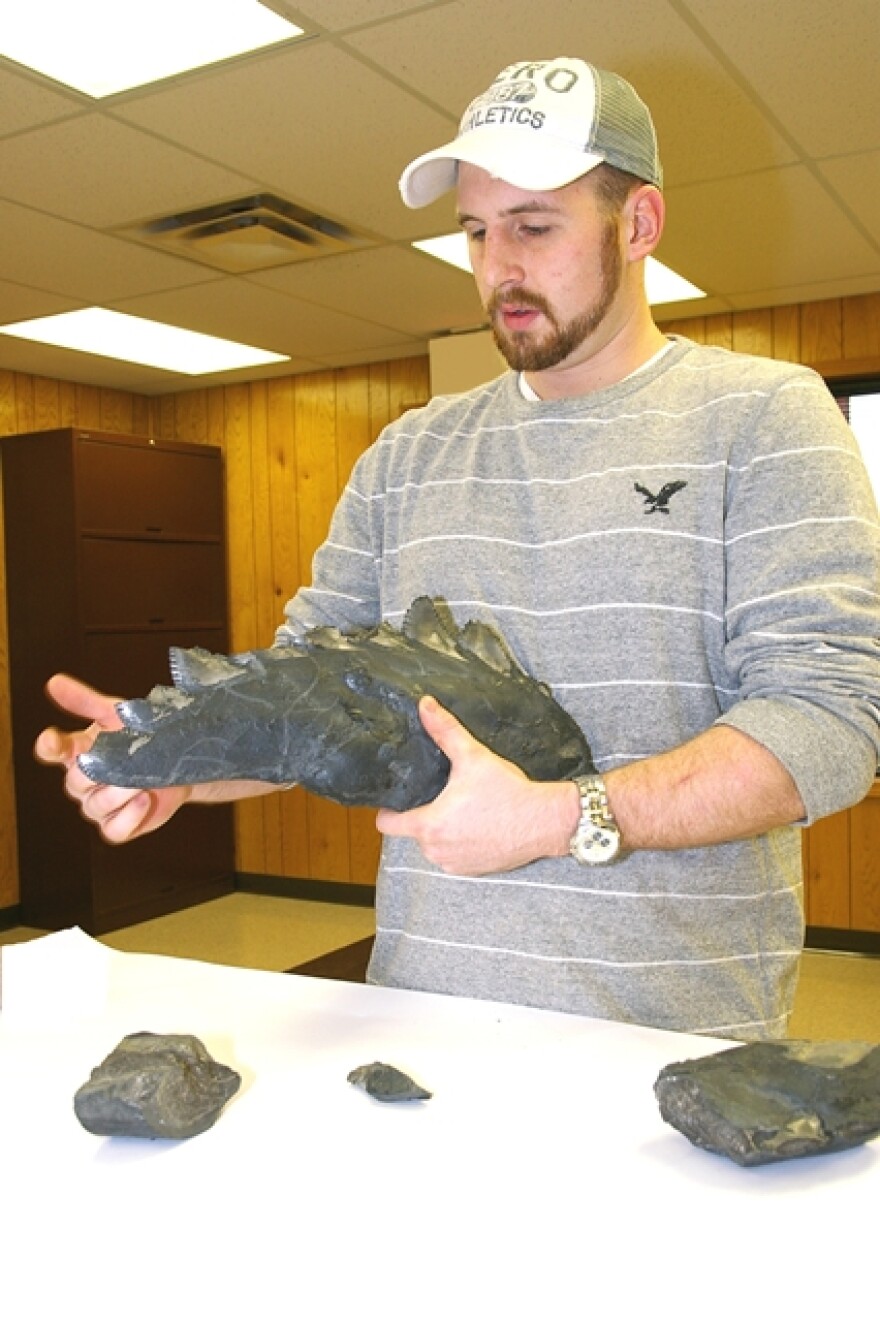By Brenna Angel
http://stream.publicbroadcasting.net/production/mp3/wuky/local-wuky-962018.mp3
LEXINGTON, Ky. – A western Kentucky man has made an interesting find at a Webster County coal mine. As Brenna Angel reports, it's a discovery that caught the attention of scientists at the Kentucky Geological Survey.
Twenty-five year old Jay Wright of Dixon, Kentucky works for the Webster County Coal Company at the Dotiki mine. That operation made headlines last year when a roof collapse killed two miners.
Wright, who normally works a continuous miner machine, was bolting the roof one February afternoon when he found something that wasn't coal.
"Well I was pinning a cross cut and I noticed a little bit of flaky rock which actually fell a little bit. So I went ahead and reached up there and pried a little bit more down and as soon as I pried it down, there was a big ole shark jaw sitting there in the top."
There, four miles underground, was an 18-inch jawbone fossil. Wright has seen smaller fossils and sea shells in the mine, but nothing like an ancient shark bone.
"I was like, 'holy crap, what did I just find?'"
Wright says he made sure there were enough pins in place to safely remove the fossil from the roof, about eight inches from the coal seam. Unfortunately the other part of the jawbone fell apart, but the piece he was able to save features several triangular-shaped serrated teeth.
Word about the fossil eventually got to the Kentucky Geological Survey and researchers at the University of Kentucky.
"Compared to others I had seen, it was just big. So this was probably a very large example of the shark," says Dr. Frank Ettensohn, a paleontologist in the UK Department of Earth and Environmental Sciences.
Ettensohn says the fossil is around 300 million years old. The scientific name of the shark is Edestus.
"It was a shark that might have looked something like a great white shark, maybe 20-plus feet in length, weighed several tons."
But Edestus had a very different jaw structure than a great white shark. Ettensohn describes it working like a pair of scissors.
The jaw and teeth were the only bony parts of Edestus, and because its cartilage decayed, scientists aren't sure what the rest of its body might have looked like. Ettensohn, along with colleague Dr. Steve Greb, will analyze the fossil to learn as much as they can.
"We take the rock and the jaw and we cut it so it's three-hundredths of a millimeter thick. Then we can look at it under a microscope. And we can see the structures and tell what kind of minerals replace it and what was the structure of the bone and the jaw."
The Webster County fossil isn't the first Edestus jaw found in Kentucky, but its size is remarkable. And it gives more insight into what the area was like during the Carboniferous Period.
"Probably we just had just as far as you could see wet, swampy, mucky kind of conditions over Kentucky. And then very rapidly, the sea came in. And it's in these shallow seas that kind of inundated these coal swamps where these sharks were living."
Ettensohn says he would like to put the Edestus fossil and other specimens found in the Commonwealth in a natural history museum, but there's no such facility in Kentucky. So when their analysis is complete, the Geological Survey will eventually take the fossil back to Webster County.
"It's kind of mind-blowing," says miner Jay Wright. "I don't know, it's just you never would have thought a shark would be there 300-plus million years ago."
The Webster County Coal Company will let Wright keep the shark fossil, but the miner says he's not sure what he'll do with his incredible find.


